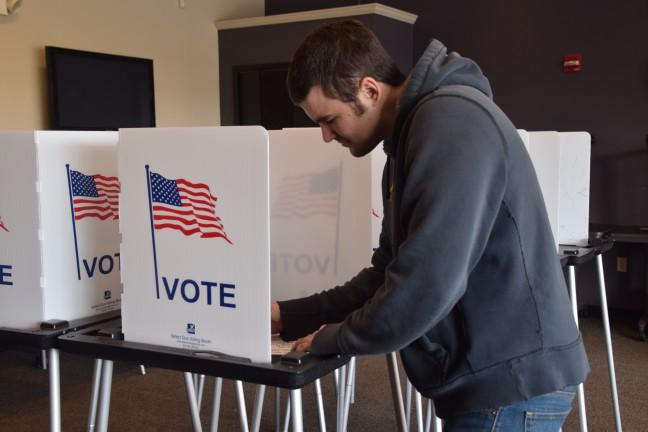One of the reasons I love Wisconsin is the state’s political importance in the United States. To some, it might be annoying to have to watch ad after ad on television during presidential elections, but it shows that the candidates value Wisconsinites.
We are exposed to political news and candidate visits unlike most states in the country. The presidential election in conservative Wyoming and liberal Vermont has already been decided, but the Badger state is a battleground state. We wield real power here, since we are only one of a dozen states that are considered swing states. Since the media will be closely watching Wisconsin’s results on the day of the election, I thought it would be a good idea to provide a guide of what to watch when the polls close.
Wisconsin has two liberal fortresses. Dane County and Milwaukee County are the population centers of the state. Cities have traditionally been Democratic bastions, and this is true in Wisconsin.
If the election is close here, former Secretary of State Hillary Clinton’s campaign needs a strong liberal turnout in these two counties. In the 2014 gubernatorial election, Democrat Mary Burke won Dane County with 69.7 percent and Milwaukee County with 62.9 percent. Burke lost the election, so Clinton needs her percentages to be even higher. Midterm elections usually have low turnout, so many Democrats are confident they can bring out more supporters this time because of the importance of a presidential election.
There are two counties that generally lean Democratically but have smaller populations. These are La Crosse and Eau Claire. Both went to Burke in 2012, but by significantly lower margins compared to Dane and Milwaukee. President Barack Obama won both counties in 2012 by larger margins and went on to win the election. On the other hand, though they lean to the Democrats, there are times that Republicans can narrowly slide in a victory in these counties. Gov. Scott Walker did win Eau Claire during the 2012 recall election.
As for Republicans, they need very good showings in the Waukesha, Ozaukee and Washington — also known as the WOW counties. These three suburban counties surround Milwaukee, and Walker managed to win 70 percent or more of the voters in each of them during the 2014 election.
Good margins for Walker in those counties offset the Democratic votes coming out of Milwaukee, and Trump’s campaign understands this. He held a rally at the Waukesha County Expo Center in late September. The day before, Republican vice presidential candidate Mike Pence was in Waukesha. Up north, Republicans have been able to counter Eau Claire and La Crosse with Marathon county.
Lastly, Wisconsin has several swing counties. There are three counties in the Fox Valley that will matter in this election: Brown (Green Bay), Outagamie (Appleton) and Winnebago (Oshkosh). Walker won all three of them decisively in 2014, but Obama managed to carry one of the three in 2012 and came close to winning the two others.
The two counties south of Milwaukee, Racine and Kenosha, are also important in elections. Both of these counties went for Obama in 2012, but they swung to Walker in 2014. Once major manufacturing hubs, their economies have transformed with globalization and the rise of free trade. Trump may be able to tap into the blue collar workers he needs here, but it depends on his campaign’s ground game.
As this presidential election draws to a close, it’s important to remember why Wisconsin matters. We are a Midwestern state, and that means we have multiple demographic groups with many different political views. The 10 electoral votes we have could decide the next president. When the coverage begins, watch our state’s results closely. If you understand Wisconsin, you might be able to project who wins this state before the media does.








